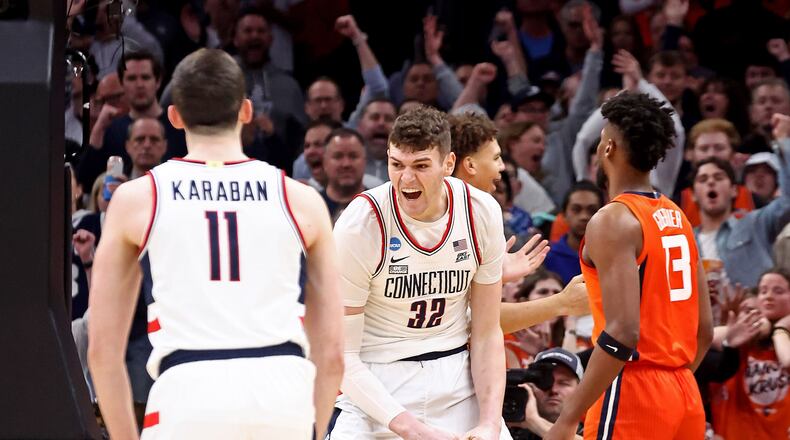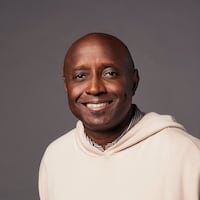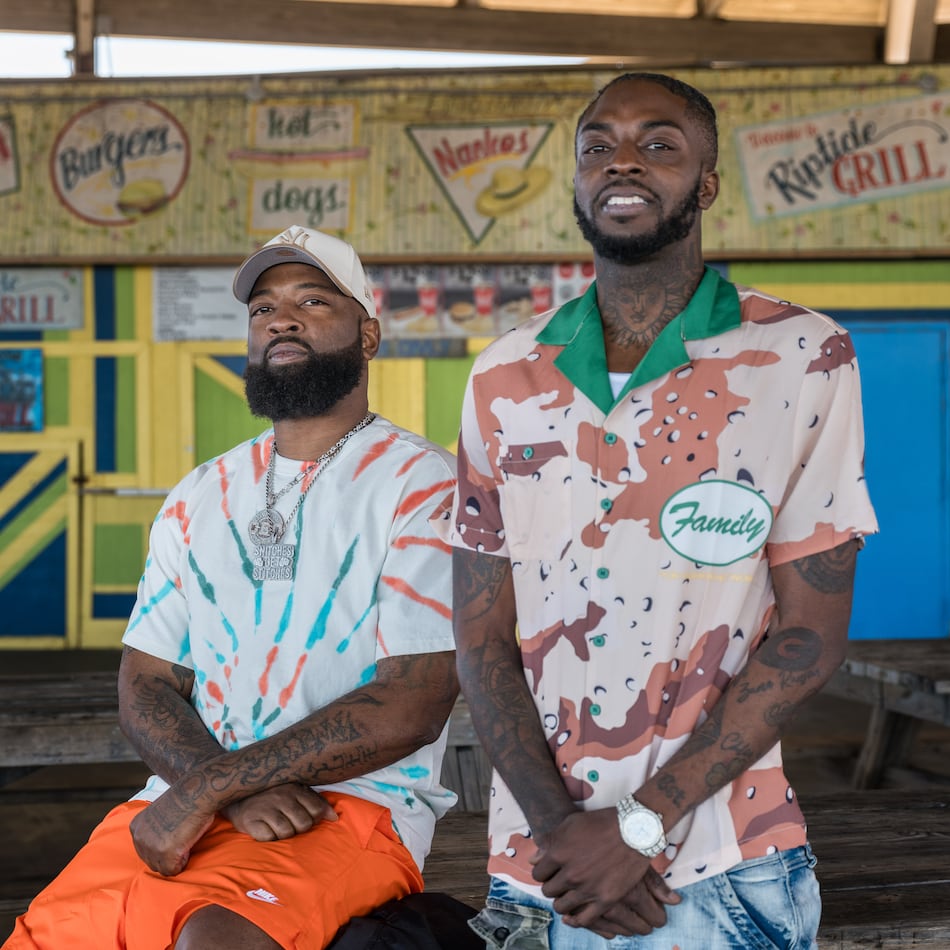Travis Schlenk came to the Hawks from the Warriors with a plan to build them in Golden State’s image. The roster would have players at all positions who can dribble, pass and shoot. The defense would be fast and furious. Size would be sacrificed for skill and versatility.
It turns out that’s a hard formula to duplicate without the greatest shooter of all time (Steph Curry) and an adaptable defensive wizard (Draymond Green). Before Schlenk was pushed out of the front office, the Hawks had topped out as a middling team with not enough size around the NBA’s smallest star, Trae Young. The biggest move the Hawks have made since Young was drafted in 2008 was to add another smallish guard, Dejounte Murray.
Maybe Schlenk eventually would have gotten around to addressing the team’s lack of length in the frontcourt (he wasn’t on board with the three draft picks that went out to get Murray). Now his successor, Landry Fields, has a golden chance to do it. The Hawks beat long odds to win the No. 1 overall pick in the draft lottery. They should use it take their pick of big men in the draft.
The consensus seems to be that, after the past several drafts included several can’t-miss prospects, this draft doesn’t even include even one. That could turn out to be the case, though projecting how prospects will fare in the NBA is a notoriously difficult undertaking. It’s possible there’s a future All-Star that teams are overlooking.
But one sure thing about this draft is there are two center prospects who can be needed defensive anchors for the Hawks now, with the potential to be a lot more later. Alexandre Sarr of Australia’s National Basketball League and Connecticut sophomore Donovan Clingan are the best available big men. Either player would help the Hawks transform their identity from a team fueled by ball-dominant guards to one that can (finally) defend with lengthy centers in the middle.
I believed Schlenk too often overlooked that aspect of team building. His philosophy was that while rim protection is important for big men, guarding pick-and-rolls on the perimeter matters more. The key is finding “bigs” who can do both while also offering offensive versatility. There aren’t many of those types of players – that’s why one of them, Kristaps Porzingis, got the nickname “The Unicorn” from Kevin Durant.
Sarr or Clingan probably won’t become unicorns. Clingan’s 55.8% free-throw shooting at UConn doesn’t bode well for his ability to be a perimeter threat in the NBA. Sarr was 14-of-47 on 3-point attempts in Australia last season. Both players have offensive skills – passing for Clingan, drives to the basket for Sarr – but their shooting will have to be developed.
That’s no small thing in the NBA. It’s probably one reason why neither Clingan nor Sarr is considered on par with the top big men from recent drafts. But they are 7-footers who are ready to contribute as NBA defenders now. If this draft really lacks future All-Stars, then that skill set would be a fine consolation prize with the No. 1 pick. That’s especially true for a team deficient in size and defense, like the Hawks.
Clingan, 20, is big and physical. At the NBA Draft Combine he weighed in at 282 pounds with a standing reach of 9 feet, 7 inches. Sarr, 19, probably is better suited to switching on defense and guarding the perimeter. He’ll need to put on muscle – Sarr weighed in at 224 pounds – but his athletic ability and 7-4 wingspan are great attributes.
Size still matters in the NBA’s space-and-pace era. Six of the final eight teams in the playoffs this year start a big man who’s at least 6-feet-11 and 240 pounds (one exception, Chet Holmgren, defends the rim well despite his relatively slight frame). The best paint protector among them is Minnesota’s Rudy Gobert, who recently won his fourth league Defensive Player of the Year award.
Hawks coach Quin Snyder had Gobert on his team in Utah. Gobert helped transform the Jazz from a bad defensive team into an elite unit. During Snyder’s first full season as Hawks coach, they finished ranked 26th in defensive efficiency. It turns out it’s not as easy to get stops without an elite paint protector. Clint Capela (6-10, 240) still is pretty good in that role despite recent injuries, but Clingan and Sarr have the potential to be great.
Trading the pick likely isn’t possible for the Hawks. If the view among teams is that this is a weak draft, then the Hawks won’t be getting any good offers for it. It takes only one team to disagree, of course, but can the Hawks really swing a deal that makes them better? If the Hawks do trade the pick, then some first-round picks in future drafts should be part of the package.
The Hawks are short on draft picks and space below the luxury-tax threshold. They don’t have control of their first-round draft picks for the next three years: San Antonio owns the 2025 and 2027 picks and can swap selections in 2026. The Hawks need more good players on rookie-scale contracts with below-market salaries. Right now, Jalen Johnson is the only rotation regular who fits that bill, and he’s due for a big raise in 2025-26.
The tight finances are another reason why winning the No. 1 pick is such a big deal for the Hawks. Not only will they be getting a young, talented player on the cheap; they’ll get whichever one they want. After building the roster around ball-dominant guards, it’s time for the Hawks to go big and draft Clingan or Sarr with the No. 1 pick.
About the Author
Keep Reading
The Latest
Featured




